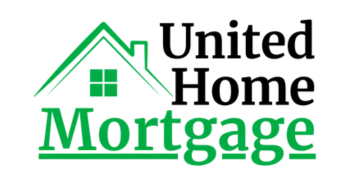
When to Consider Refinancing Your Mortgage | United Home Mortgage
"Refinancing is like a breath of fresh air for your finances—it can give you the space to breathe and move forward." — Unknown
When to Consider Refinancing Your Mortgage
Refinancing your mortgage is a significant financial decision that can lead to substantial benefits, such as lower monthly payments, reduced interest rates, and even the ability to pay off your mortgage sooner. However, refinancing isn’t always the right move for everyone. It’s essential to understand when and why you should consider refinancing to make the most of this opportunity. In this comprehensive guide, we’ll explore the key factors to consider, the benefits of refinancing, and how to determine if it’s the right time for you.
What Is Mortgage Refinancing?
Before diving into when to consider refinancing, let’s start with the basics. Mortgage refinancing is the process of replacing your existing mortgage with a new one, often with different terms. The new loan pays off the old one, and you start making payments on the new mortgage. Homeowners refinance for various reasons, including securing a lower interest rate, changing the loan term, switching from an adjustable-rate mortgage (ARM) to a fixed-rate mortgage, or tapping into home equity.
Reasons to Consider Refinancing
There are several scenarios in which refinancing your mortgage might be a wise financial decision. Let’s explore some of the most common reasons homeowners choose to refinance.
1. Lower Interest Rates
One of the most compelling reasons to refinance is to take advantage of lower interest rates. Mortgage interest rates fluctuate based on economic conditions, and if rates have dropped since you first took out your mortgage, refinancing could save you thousands of dollars over the life of your loan.
Example:
If you originally secured a 30-year fixed-rate mortgage at 4.5% and interest rates have since dropped to 3%, refinancing could significantly reduce your monthly payments and the total interest paid over the life of the loan.
When to Consider:
If current interest rates are at least 1% lower than your existing rate.
If you plan to stay in your home long enough to recoup the closing costs associated with refinancing.
Pro Tip:
Before refinancing for a lower rate, use a mortgage calculator to estimate your new payments and compare them to your current payments. This will help you determine if refinancing is financially beneficial.
2. Shortening the Loan Term
Another common reason to refinance is to shorten the loan term. For example, if you currently have a 30-year mortgage, refinancing to a 15-year mortgage can help you pay off your home faster and save money on interest. While your monthly payments may increase with a shorter term, the interest savings over the life of the loan can be substantial.
Example:
Refinancing from a 30-year mortgage to a 15-year mortgage at a lower interest rate can reduce the total interest paid and allow you to build equity faster.
When to Consider:
If you can afford higher monthly payments and want to pay off your mortgage sooner.
If you’re nearing retirement and want to eliminate mortgage debt before you retire.
Pro Tip:
Consider your long-term financial goals and how a shorter loan term aligns with them. While higher monthly payments can be challenging, the long-term benefits of paying off your mortgage sooner are worth considering.
3. Switching from an ARM to a Fixed-Rate Mortgage
Adjustable-rate mortgages (ARMs) start with a fixed interest rate for a set period, after which the rate adjusts periodically based on market conditions. While ARMs often start with lower rates than fixed-rate mortgages, the uncertainty of future rate adjustments can be unsettling. Refinancing to a fixed-rate mortgage can provide stability and peace of mind, especially if you plan to stay in your home long-term.
Example:
If you have a 5/1 ARM and are approaching the end of the fixed-rate period, refinancing to a fixed-rate mortgage can lock in a stable rate for the remainder of the loan term.
When to Consider:
If interest rates are rising, and you want to avoid potential rate increases with an ARM.
If you plan to stay in your home for several years and prefer the predictability of a fixed-rate mortgage.
Pro Tip:
Keep an eye on interest rate trends. If rates are expected to rise, refinancing to a fixed-rate mortgage can protect you from future rate hikes.
4. Cash-Out Refinancing
Cash-out refinancing allows you to tap into your home’s equity by refinancing for more than you owe on your current mortgage. The difference between the new loan amount and your existing mortgage balance is paid out to you in cash, which you can use for various purposes, such as home improvements, paying off high-interest debt, or covering major expenses.
Example:
If your home’s value has increased significantly since you purchased it, cash-out refinancing can provide the funds needed to renovate your home or pay for a child’s college tuition.
When to Consider:
If you have significant equity in your home and need cash for major expenses or investments.
If you can secure a lower interest rate while accessing the equity in your home.
Pro Tip:
Be cautious with cash-out refinancing. While it can provide access to funds, it also increases your mortgage balance and monthly payments. Ensure that the benefits outweigh the costs.
5. Consolidating Debt
If you’re carrying high-interest debt, such as credit card balances or personal loans, refinancing your mortgage to consolidate debt can be a smart move. By rolling your high-interest debt into your mortgage, you can take advantage of lower interest rates and simplify your monthly payments.
Example:
Refinancing your mortgage to pay off $30,000 in credit card debt at 18% interest could save you hundreds of dollars each month in interest payments.
When to Consider:
If you have high-interest debt that you want to consolidate into a lower-interest mortgage.
If you’re struggling to manage multiple debt payments and want to simplify your finances.
Pro Tip:
Debt consolidation through refinancing can be effective, but it’s essential to address the underlying causes of debt to avoid accumulating more debt in the future.
6. Removing Private Mortgage Insurance (PMI)
If you purchased your home with a down payment of less than 20%, you likely have private mortgage insurance (PMI). PMI protects the lender in case you default on your loan, but it also adds to your monthly mortgage payment. Once you’ve built up enough equity in your home, refinancing can eliminate PMI and reduce your monthly payments.
Example:
If your home’s value has increased and you now have more than 20% equity, refinancing to remove PMI can lower your monthly payments and save you money over time.
When to Consider:
If your home’s value has increased, and you have more than 20% equity.
If you want to reduce your monthly mortgage payment by eliminating PMI.
Pro Tip:
Before refinancing to remove PMI, check with your lender to see if you’re eligible for PMI cancellation without refinancing. Some lenders allow you to cancel PMI once you reach 20% equity without the need to refinance.
7. Refinancing to Change Loan Type
If your financial situation has improved since you first took out your mortgage, you might consider refinancing to change the type of loan you have. For example, if you originally secured an FHA loan with a low down payment, you could refinance into a conventional loan to eliminate the need for mortgage insurance and potentially secure better terms.
Example:
Refinancing from an FHA loan to a conventional loan with a lower interest rate and no mortgage insurance can save you money each month.
When to Consider:
If your credit score has improved, and you qualify for better loan terms.
If you want to eliminate mortgage insurance or take advantage of a different loan type.
Pro Tip:
Compare the terms of your current loan with the terms of the new loan to ensure that refinancing offers tangible benefits. Consider both the short-term and long-term costs and savings.
Costs of Refinancing: What You Need to Know
While refinancing can offer significant benefits, it’s essential to consider the costs involved. Refinancing isn’t free, and understanding the associated costs will help you determine if it’s the right move for you.
1. Closing Costs
Refinancing typically involves closing costs, which can range from 2% to 5% of the loan amount. These costs may include:
Application Fee: Covers the cost of processing your loan application.
Origination Fee: A fee charged by the lender for processing the loan.
Appraisal Fee: The cost of having your home appraised to determine its current value.
Title Search and Insurance: Covers the cost of verifying ownership and ensuring the title is clear.
Attorney Fees: If required, this covers the cost of legal services.
Pro Tip:
Some lenders offer no-closing-cost refinancing options, where the closing costs are rolled into the loan balance or the interest rate. While this can reduce upfront costs, it may result in a higher overall loan balance or interest rate.
2. Prepayment Penalties
Some mortgages include a prepayment penalty, which is a fee charged if you pay off the loan early, including through refinancing. Before refinancing, check your current mortgage terms to see if a prepayment penalty applies and factor it into your decision.
Pro Tip:
If your mortgage has a prepayment penalty, calculate whether the savings from refinancing outweigh the cost of the penalty.
3. Points and Fees
When refinancing, you may have the option to pay points upfront to reduce your interest rate. Each point typically costs 1% of the loan amount and can lower your interest rate by a certain percentage. While paying points can save you money over the life of the loan, it also increases your upfront costs.
Pro Tip:
Consider how long you plan to stayto continue this, think about how long you plan to stay in the home before deciding to pay points. If you plan to stay for a long time, paying points upfront could save you money in the long run. If not, you might be better off avoiding this additional cost.
4. Loan Term Considerations
When refinancing, you have the option to reset your loan term. While this can lower your monthly payments, it also extends the time you’re paying interest, which could increase the total cost of the loan. On the other hand, shortening your loan term can increase your payments but save you money on interest over time.
Example:
If you have 20 years left on your 30-year mortgage and refinance into a new 30-year loan, you’ll be paying for an additional 10 years, potentially increasing the total interest paid.
Pro Tip:
Consider the trade-off between lower monthly payments and the overall cost of the loan. If possible, try to refinance into a loan term that aligns with your financial goals without extending the payment period unnecessarily.
When Not to Refinance
While refinancing can be beneficial, it’s not always the right choice. Here are some situations where refinancing might not be in your best interest:
1. Short-Term Homeownership Plans
If you plan to sell your home in the next few years, refinancing might not be worth the cost. Since refinancing involves closing costs, you need to stay in the home long enough to recoup those expenses through lower payments. If you sell too soon, you might not break even.
Pro Tip:
Calculate your break-even point to determine how long you need to stay in your home for refinancing to pay off. If you’re planning to move before reaching that point, it might be better to stick with your current mortgage.
2. Minimal Interest Rate Savings
Refinancing only makes sense if you can secure a lower interest rate that results in significant savings. If the difference between your current rate and the new rate is minimal, the cost of refinancing might outweigh the benefits.
Pro Tip:
As a general rule of thumb, aim for a rate reduction of at least 1% to make refinancing worthwhile. Use a mortgage calculator to estimate your savings and compare them to the costs of refinancing.
3. High Closing Costs
If the closing costs associated with refinancing are too high, it might not be worth it. Even with a lower interest rate, high upfront costs can negate the potential savings. Be sure to shop around for lenders and compare closing costs before making a decision.
Pro Tip:
Ask lenders about no-closing-cost refinancing options, where the closing costs are rolled into the loan amount or the interest rate. While this might result in a slightly higher monthly payment, it can reduce your upfront expenses.
The Refinancing Process: Step by Step
If you’ve decided that refinancing is right for you, it’s essential to understand the steps involved. Here’s a step-by-step guide to the refinancing process:
1. Assess Your Financial Situation
Before refinancing, take a close look at your financial situation. Review your credit score, income, debts, and current mortgage terms. This will give you a better idea of what to expect when applying for a new loan.
Pro Tip:
Improving your credit score before refinancing can help you secure a better interest rate. Pay down debt, make timely payments, and avoid taking on new credit before applying.
2. Determine Your Goals
What do you hope to achieve by refinancing? Whether it’s lowering your monthly payments, shortening your loan term, or accessing cash, clearly define your goals before moving forward. This will help you choose the right type of refinance loan and make informed decisions throughout the process.
3. Shop Around for Lenders
Not all lenders offer the same terms, so it’s essential to shop around. Get quotes from multiple lenders and compare interest rates, closing costs, and loan terms. This will help you find the best deal that aligns with your refinancing goals.
Pro Tip:
Consider working with a mortgage broker who can help you compare offers from various lenders and find the best terms for your situation.
4. Apply for the Refinance Loan
Once you’ve selected a lender, it’s time to apply for the refinance loan. You’ll need to provide documentation such as pay stubs, tax returns, bank statements, and information about your current mortgage. The lender will review your application, assess your financial situation, and determine your eligibility.
Pro Tip:
Be prepared to provide additional documentation if requested by the lender. Promptly responding to requests can help expedite the approval process.
5. Lock in Your Interest Rate
After your application is approved, the lender will offer you the opportunity to lock in your interest rate. Rate locks typically last 30 to 60 days, protecting you from interest rate fluctuations during the closing process. Locking in your rate ensures that you’ll receive the agreed-upon rate when your loan closes.
Pro Tip:
Ask your lender about the rate lock period and whether they offer a float-down option, which allows you to take advantage of lower rates if they drop before closing.
6. Prepare for the Home Appraisal
In most cases, the lender will require a home appraisal to determine your property’s current value. The appraisal is a crucial step in the refinancing process, as it impacts the loan amount you’re eligible for and whether you’ll need mortgage insurance.
Pro Tip:
Prepare your home for the appraisal by making necessary repairs, cleaning, and ensuring that your property is in good condition. A higher appraisal value can work in your favor when refinancing.
7. Review the Loan Estimate
Once the appraisal is complete, the lender will provide a Loan Estimate, detailing the terms of your new loan, including the interest rate, monthly payments, and closing costs. Review this document carefully to ensure that everything aligns with your expectations.
Pro Tip:
Compare the Loan Estimate to your original mortgage terms and consider the short-term and long-term costs. If you have any questions or concerns, don’t hesitate to ask your lender for clarification.
8. Close on the New Loan
The final step in the refinancing process is closing on the new loan. This involves signing the loan documents, paying any required closing costs, and finalizing the new mortgage. Once the loan closes, your old mortgage will be paid off, and you’ll start making payments on the new loan.
Pro Tip:
Review the closing documents carefully before signing, and ensure that all the terms match what was outlined in the Loan Estimate. Keep copies of all the paperwork for your records.
Final Thoughts: Is Refinancing Right for You?
Refinancing your mortgage can be a powerful financial tool, offering benefits such as lower interest rates, reduced monthly payments, and the ability to pay off your loan sooner. However, it’s essential to carefully consider your financial situation, goals, and the costs involved before making a decision.
By understanding when and why to refinance, you can make an informed choice that aligns with your long-term financial goals. Whether you’re looking to save money, access home equity, or achieve financial stability, refinancing might be the right move for you.
At United Home Mortgage, we’re here to help you navigate the refinancing process with confidence. Our team of experienced mortgage professionals is dedicated to finding the best refinancing options tailored to your needs. If you’re considering refinancing, schedule a one-on-one consultation with us today, and let us guide you through the process.
Ready to explore your refinancing options? Schedule your consultation today, and take the first step toward financial freedom!
United Home Mortgage Network Inc TM DBA United Home Mortgage TM NMLS 1984776 @ Copyright 2024 - All Rights Reserved







